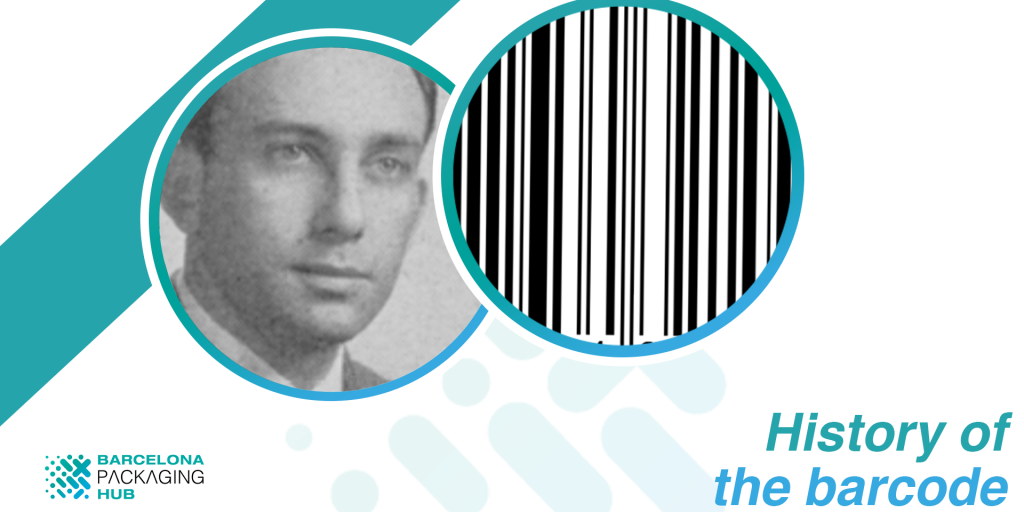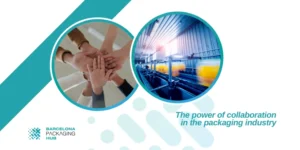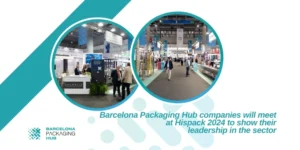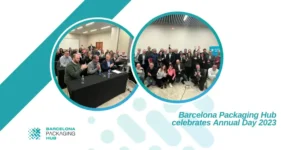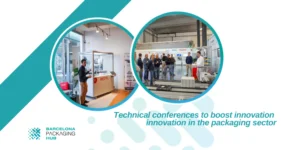Barcodes are part of our corporate identity, a key element in identification, logistics and traceability, and undoubtedly linked to the essence of one of Barcelona Packaging Hub’s partner, United Barcode Systems. This is its history:
There is some controversy surrounding the birth of the barcode. There are theories that relate its creation to a system for identifying railroad cars, others that place its origin in Harvard in the mid-1920s and others that speak of two Pennsylvania students in the 1950s. Similarly, there is no unanimity as to the first product identified by this tool that has become indispensable today.
The fathers of barcode
However, there is a majority of opinions that agree that this identification system originated in 1948, in Pennsylvania, USA, when the owner of a grocery store called Food Fair went to Drexel University in search of a solution to better track inventory. Bernard Silver and Norman Joseph Woodland, both graduates of the technological institute, took on this project and began research to find the most effective method. The solution they came up with was to use fluorescent ink to mark the products and then read the code with ultraviolet light. Unfortunately, the method was not entirely useful and did not succeed.
Norman Joseph Woodland (left) y Bernard Silver (right)
It was then that Woodland, motivated by the challenge that Food Fair had set them, decided to abandon his studies and move to Miami to devote himself entirely to the development of a method to encode the information on the products in the warehouse. He found a way using Morse code as a basis. There is a fable that tells how inspiration came to him on the beach, when, writing dots and stripes in the sand, Norman realized that he could stretch them to form vertical lines of different widths and imagined that the information would be encoded based on the presence or absence of vertical lines. Later he decided to give it a new design, forming with those same lines a circle of concentric bars. The reason for this evolution would be to be able to read the codes without depending on the product being correctly positioned.
From this development came the idea submitted to the patent registry on October 20, 1949 and accepted (with the code 2.612.994) on October 7, 1952 by Silver and Woodland: a circular bar code with concentric lines of different thicknesses. An idea that was never put into practice, as reading the information was complex and made the process too expensive. The patent was eventually sold to the American company RCA, Woodland started working at IBM and Silver died before he could see his idea implemented.
Railroad identification code
The standardization of barcodes
RCA labels were problematic because the direction in which the paper run when printed made them unreadable in many cases. For this reason, in 1973, the NAFC chose the IBM standard over the other competitors’ proposals.
On June 26, 1974, at 08:01, a customer bought a pack of Wrigley’s chewing gum, which was scanned by cashier Sharon Buchanan, the first product to be scanned with a bar code reader. The rest is history.
For more information
bph@barcelona-packaging-hub.com
https://barcelona-packaging-hub.com/contacto/

